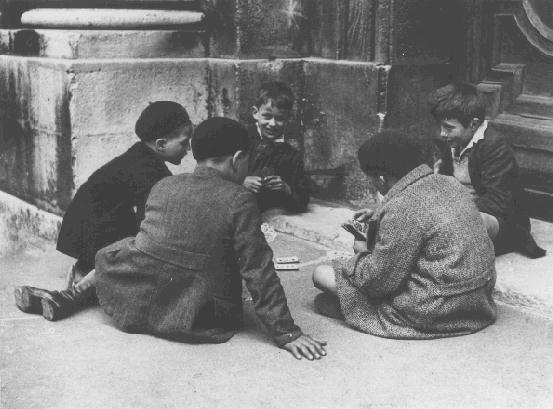
A city kid understands pavements and streets much as a kid in the country understands fields of grass--the warm summer concrete against his bare legs, fragile ants crawling in the earth-filled cracks among hair-frail strands of grass, or the sun-softened tar of the roads that wavered underfoot like a gently rocking sea. I loved the streets most in the late fall and early winter and would hide in the darkness when my mother, from our window one storey up, tried to call me home. When the short days of winter came dusk fell before we had well eaten our dinners. When we met in the street the houses had grown sombre. The space of sky above us was the colour of ever-changing violet and towards it the lamps of the street lifted their feeble lanterns. The cold air stung us and we played till our bodies glowed. Our shouts echoed in the silent street. This is a passage from Joyce's "Araby", one that I feel so close to that it's sometimes hard for me to imagine that Joyce's street lamps are gas-light, that this is Dublin in 1890, so strong is the continuity, the sensations of urban street life passed down through Joyce and Kertesz in Dublin and Paris to my generation in New York.
But in our street life, there was usually a kind of Aristotelian catharsis of violence; and it wasn't only because of the War; it was the streets themselves. Even harmless sidewalk sports like handball and its various derivatives imposed physical penalties on the loser. Some of our games could only have had their origins in sports like 16th century British football, from all descriptions and official accounts played by ruffians for blood, for instance "ring- a-leev-io", a kind of sublimated gang warfare. But the game that represented most what we must have thought of the world was "king of the mountain". The rules were straightforward. You go to a vacant lot, find a piece of ground with a high point--a small hill, large boulder, a pile of rubble. The king is whoever is strong enough to hold on to the high ground while everyone tries to knock him and everyone else off. I remember one otherwise strong and successful king suddenly out cold on a pile of bricks frothing at the mouth. Not the first time we'd seen someone bloody or unconscious or frothing at the mouth. For everywhere in the margins of childhood we could read a gloss of unpredictable brutality.